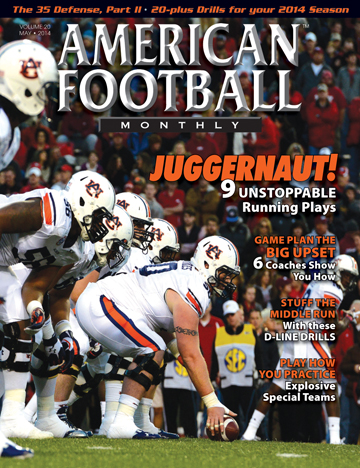Article CategoriesAFM Magazine
|
Athletic Body Control The Movement Training Correlation to Football Speedby: Dale BaskettFootball Speed Specialist © More from this issue Before we move to the details of movement training, let’s clarify what is football speed – the velocity and control by which variable movement patterns are executed efficiently without velocity loss. Most of the time it’s far easier said than done. My term for this activity is “Transition Speed.” The second area to clarify is Athletic Body Control (ABC). The term “Athletic” means athletes and the exercises practiced by them in a sport that requires physical skill or strength. “Body” is the term that means the collective unit of body mass with moving parts. “Control” means to cause something to function in a certain way. Running fast while performing multi-movement changes requires efficient control of the body as an entire unit. When considering training movement skills for football, you must r....The full article can only be seen by subscribers.
|
|
|||||||
| HOME |
MAGAZINE |
SUBSCRIBE | ONLINE COLUMNISTS | COACHING VIDEOS |
Copyright 2026, AmericanFootballMonthly.com
All Rights Reserved





